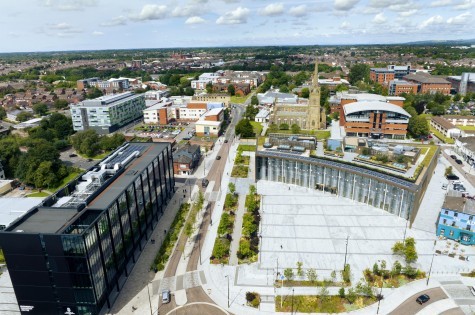In construction and engineering, riser grating plays a crucial role, albeit often not at the forefront of discussions. Riser grating is primarily utilised in vertical spaces within buildings and industrial environments to prevent objects or individuals from falling through openings whilst allowing essential elements like light and air to pass through.
What is Riser Grating?
Riser grating refers to the metal or fibreglass grids installed over open spaces between floors in a building. These gratings are typically found in stairwells, lift shafts, and between floors in multi-storey buildings. The primary function of riser grating is to ensure safety by covering open risers, preventing falls, and reducing the risk of accidents.
Importance of Riser Grating
The significance of riser grating can be underscored by its contribution to safety and compliance with building codes. Many local and international building regulations mandate the use of riser gratings to enhance the safety of building occupants. This is particularly vital in emergency situations, such as fires or evacuations, where visibility and movement are crucial.
Moreover, riser grating contributes to the aesthetic and functional design of a space. Architects and designers often choose gratings that complement the architectural style of the building whilst providing the necessary safety features. Additionally, riser grating helps in maintaining the structural integrity of buildings by supporting weights and enduring constant use without significant wear.
Applications of Riser Grating
Riser grating finds its application in various sectors, including industrial, commercial, and residential buildings. In industrial settings, it is commonly used around machinery, platforms, and staircases to prevent tools or parts from falling through, which could cause injuries or damage. In commercial buildings, such as shopping centres and office towers, riser gratings ensure the safety of the occupants by covering large vertical openings in atriums and between escalators.
In residential buildings, particularly in flat complexes, riser grating can be found in staircases where they provide essential safety for residents, including children and the elderly, by preventing missteps and falls. Additionally, riser grating is used in car parks and basements for similar purposes, enhancing both safety and ventilation.
Selection Considerations for Riser Grating
Choosing the right riser grating involves several key considerations to ensure it meets the specific needs of a project whilst adhering to safety standards. The following are critical factors to consider:
- Material: Riser gratings are typically made from steel, aluminium, or fibreglass. Each material offers different benefits; steel is known for its strength and durability, aluminium is lightweight and resistant to corrosion, and fibreglass is non-conductive and non-corrosive.
- Load-bearing capacity: Depending on the location and use, the load-bearing capacity of riser grating must be determined. Industrial applications might require heavier load capacities compared to residential or commercial uses.
- Open area: The percentage of open area in a riser grating affects both the light and air passage through it. The choice depends on the ventilation needs and safety considerations of the building.
- Finish: The finish of the grating can affect its longevity and safety. Galvanised, painted, or coated finishes are available and can be chosen based on the environment where the grating will be installed.
- Compliance with standards: It is imperative to choose gratings that comply with relevant local and international safety standards to ensure adequate protection and legal compliance.
Riser grating is an essential component of modern construction, pivotal not only for ensuring safety but also for fulfilling regulatory requirements. Its applications across various industries underline its versatility and importance. By carefully selecting the right type of riser grating, stakeholders can enhance the safety, functionality, and aesthetics of buildings, contributing to safer and more efficient spaces. Whether in industrial settings, commercial complexes, or residential areas, the role of riser grating is fundamentally about safeguarding against potential hazards whilst supporting architectural objectives.


















